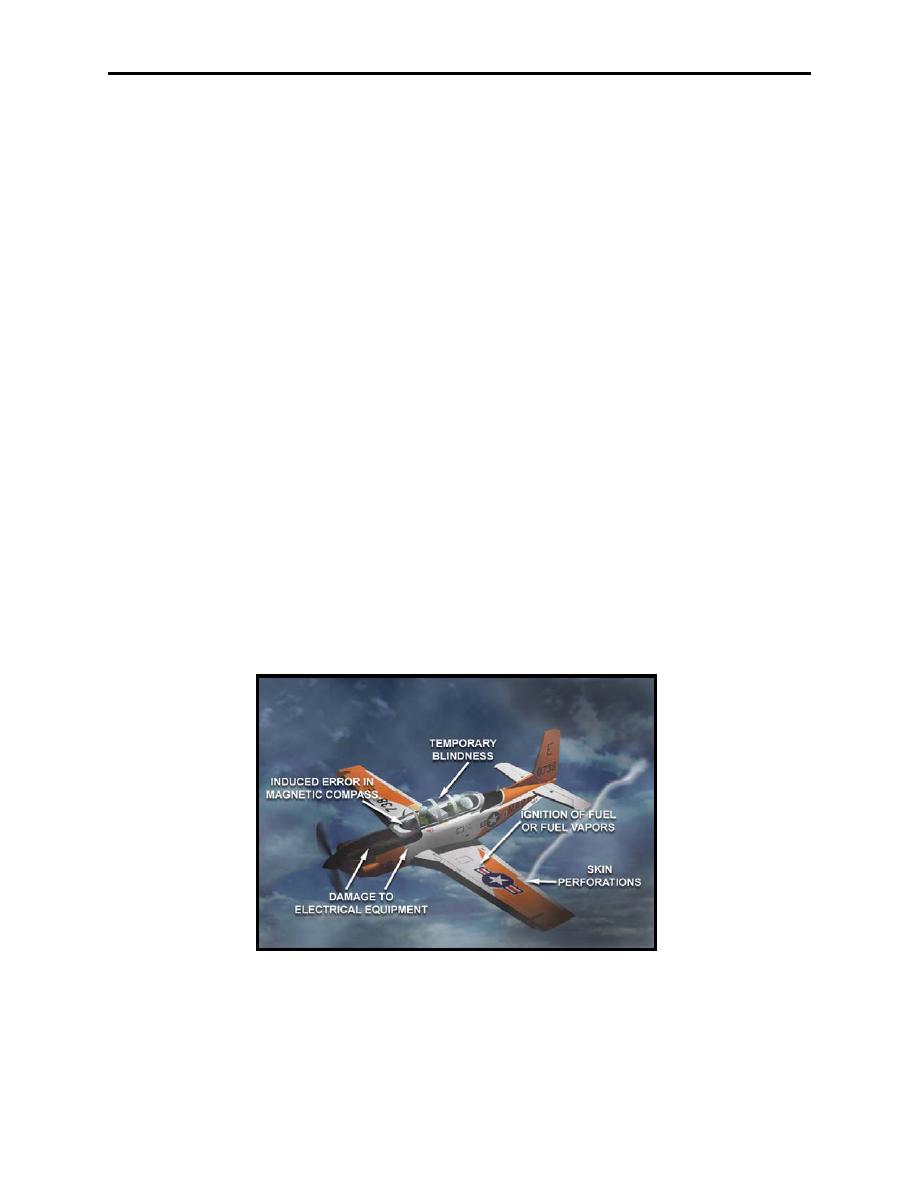 |
|||
|
|
|||
|
Page Title:
Aircraft Lightning or Electrostatic Discharge Encounters |
|
||
| ||||||||||
|
|  CHAPTER FOUR
AVIATION WEATHER
Aircraft Lightning or Electrostatic Discharge Encounters
Lightning strikes and ESD are the most reported weather-related aviation incidents. All types of
aircraft are susceptible to lightning strikes and ESD. Aircraft have been struck by lightning or
experienced ESD at altitudes ranging from the surface to at least 43,000 feet.
Most lightning strikes occur when aircraft are operating in one or more of the following
conditions:
1.
Within 8C of the freezing level.
2.
Within approximately 5000 feet of the freezing level.
3.
In precipitation, including snow.
4.
In clouds.
5.
In some turbulence.
Note
Not all these conditions need to occur for a lightning strike or an
ESD to take place.
Lightning strikes have varied effects on aircraft and aircrews (Figure 4-5). Usually the structural
damage is minor, but it has the potential to be severe. Normally, it will only interrupt electrical
circuits, causing damage to aircraft electrical systems, instruments, avionics, or radar.
Figure 4-5 Lightning Hazards
Catastrophic fuel ignition can occur under certain conditions. In non-pressurized fuel tanks, a
mixture of vaporized fuel and air fills the space above the liquid fuel. The proper ratio of fuel
4-6
Thunderstorms
|
|
Privacy Statement - Press Release - Copyright Information. - Contact Us |